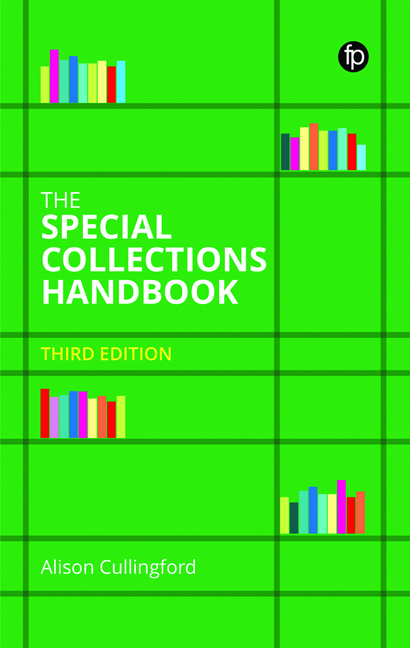Book contents
9 - Marketing and Communications in Special Collections
Published online by Cambridge University Press: 28 April 2022
Summary
Introduction
Marketing in Special Collections is often equated with promotion (e.g., producing leaflets), but promotion is just one element of marketing. Marketing is about every interaction a library has with its users, defining and meeting their needs, and all staff have a part to play, even if marketing specialists are employed.
Librarians sometimes worry that marketing will lead to an increase in use, which is a concern if services struggle with existing demand. However, good quality communication means better informed Special Collections users who need less individual attention. Increased use helps librarians acquire funding and resources; diminishing use and hidden collections lead only to stagnation and threat.
In this chapter we cover:
1 The marketing mix.
2 Commodity/product and marketing messages.
3 Cost/price and convenience/place.
4 Communications/promotions, including key channels: websites, the press, social media and advertising.
5 Researching user needs.
6 Suggestions for further reading and useful websites.
The Special Collections marketing mix
A little marketing theory is helpful. The marketing mix is a model of the elements that factor into a customer's decision to buy a product or, in our case, to use Special Collections.
There are several variants on the marketing mix: the 4Ps, the 4Cs and the 7Ps. The traditional 4Ps (Product, Price, Place, Promotion) were introduced by McCarthy in the 1960s. For service industries, Booms and Bitner added three more Ps: People, Processes and Physical evidence. In this chapter, I follow Lauterborn's structure of the more useroriented 4Cs (Commodity, Cost, Convenience, Communication), which I believe fit the needs of library users better.
Commodity: the Special Collections offer
Special Collections offer the following to potential users:
1 Collections. Our huge collections, on-site and online, are full of content relevant to all kinds of people that can be adapted and viewed in all kinds of ways.
2 Services, e.g., reading room access, reprographics.
3 Programming, such as exhibitions, talks, visits, art displays, online learning.
4 Expertise. Staff unlock collections and support users with their expertise.
5 Messages. The mission, expressed informally for different audiences, maybe as an elevator pitch, an informal sentence or two to explain the mission to new acquaintances. There are also many messages within the collections.
Marketing messages
The following messages fit most Special Collections and are adaptable to various audiences and methods. They are the basis of much of the programming and activity in Special Collections.
- Type
- Chapter
- Information
- The Special Collections Handbook , pp. 225 - 248Publisher: FacetPrint publication year: 2022



